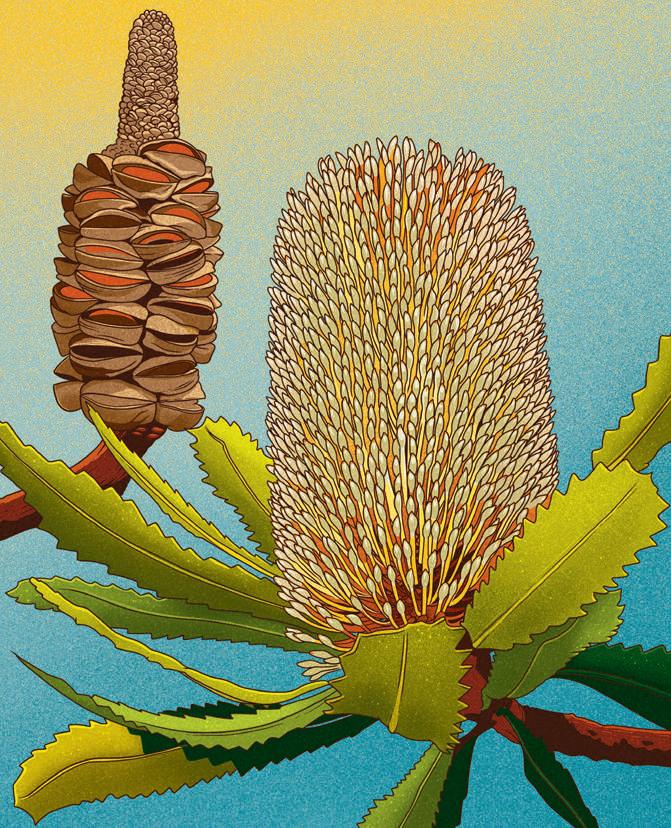
2 minute read
Coastal Banksia
~ Banksia integrifolia ~
Birrna in the Gunai language
Advertisement
PROTEACEAE
I marvel at the resilience of Banksias and their loyalty to their communities. They are rich in nectar and play a vital part within their ecosystems, providing habitat for birds, mammals and invertebrates as well as food for nectarivorous animals in seasons when food is scarce. They are also pioneers of resilience, evolving special roots that resprout after fire, toughened protective bark, specialised floral structures to assist pollination and seed follicles that respond to fire and heat. One of their nectar-loving friends is pictured here, the Sugar Glider (Petaurus breviceps), who is a keen pollinator of the flowers and feeds on the pollen, nectar and insects that use the tree as habitat. These special plants are also used for bush revegetation and stabilisation of sand dunes.
WHERE TO LOOK
The Coastal Banksia can be predominately found throughout sandy heaths within 50–200km of the eastern coastline from Wurundjeri (Melbourne) in Victoria to around Proserpine in Queensland. It enjoys open forest environments and can be seen along roadsides, in parks and perched on sand dunes. It will be in the company of Pink Pigface (see p. 25), Goats Foot (see p. 29), Paperbarks and Banksias.
Locations → Queensland: Pumicestone Channel, Bribie Island North, Noosa National Park and K’gari (Fraser Island); NSW: Ku-ring-gai Chase National Park; Victoria: Mornington Peninsula National Park.
FEATURES
It can stand as a tall tree reaching 25–30m or a smaller shrub in exposed areas. Its leaves are memorable, with a dark glossy surface and white undersides giving the tree a beautiful contrast when dancing with a coastal breeze. Its flower is an inflorescence, made up of a few hundred tiny flowers densely packed in a pale yellow spiral. These inflorescences are around 12cm tall and sit upright on thick, woody gnarled branches. Once pollinated, the flower will fruit, forming seed follicles, which open and release the seed once the fruit has matured or has been stimulated by fire.
FLOWERING SEASON
Year-round → Flowers can be seen all year, though are more prolific in autumn and early winter.
TRADITIONAL USES
The nectar of ripe Banksia flowers can be sucked from the flower heads or soaked to make a sweet drink, with Wattle gum sometimes added in.
PLANTING
Seeds and plants are easily found online and in specialty nurseries. For seed pod treatment and germination see the Old Man Banksia on p. 135. Coastal Banksia will appreciate well-drained soil in an open sunny position.










